When it comes to wedding photography, there are a few things that are absolutely essential to get right. The bride's dress, the groom's tuxedo, and the cake all have to be captured perfectly. But what about the photos that aren't so obvious? Photos of the guests, the flowers, and even the rings can be just as important. And one of the best ways to make sure all these photos turn out great is by using flash photography. Here are our tips on mastering flash photography for wedding photos.
Flash Photography for Weddings: Use Your Flash to Balance the Exposure of Your Photos
Sometimes, depending on the wedding, you'll have to photograph the couple, or guests, during the middle of the day.
This can be due to the ceremony and reception scheduling that cannot be changed.
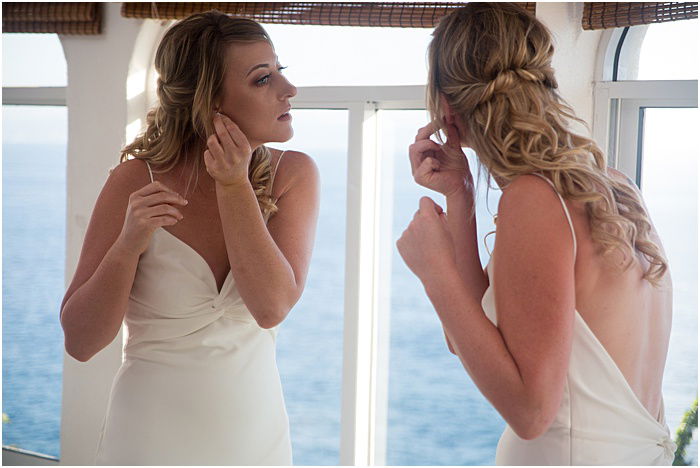
Used flash to light the bride so that the ocean in the background didn’t completely wash out.
Using your flash during this time may help you to fill in light. That way you’ll get more even exposures. This is helpful when you are photographing people outside.
If the light in the background is brighter than your foreground, a flash can help pop light back onto your subjects. It’ll keep you from over-exposing the background.
If you are competing with midday sunlight, try and pose your couple with the sun behind them. Use the flash to compete with the sun to fill in light.
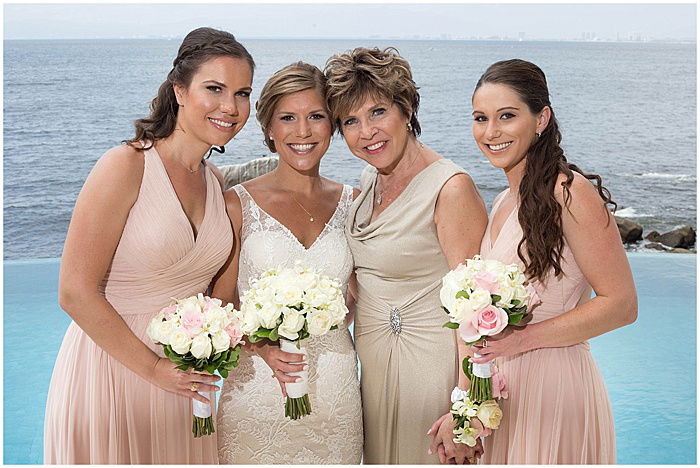
Used flash to light the bride and her family while keeping the background exposed correctly. Without flash, the background would be washed out and overexposed.
If you're using flash in
ETTL, that means that the flash will
meter the light. It will output the amount of light it thinks it will need for the scene.
If you are photographing with the flash in
manual mode, then I would suggest setting your flash, to begin with, at 1/4 power. Adjust from there depending on your scene.
Also, make sure that in manual, you are using the
high sync function. That way you can photograph the scene with a faster shutter than 1/200th of a second.
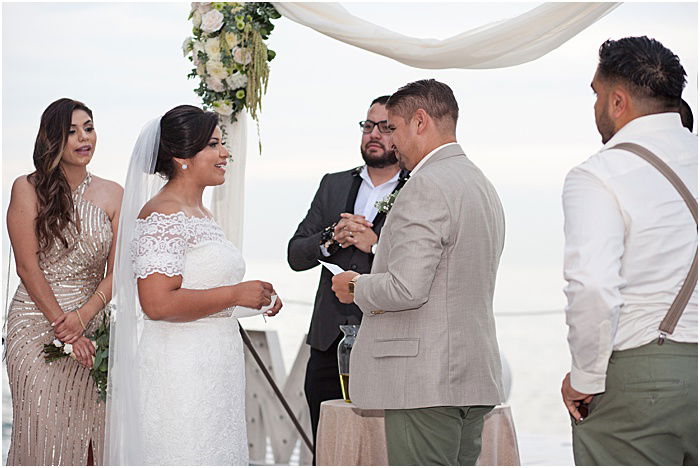
This wedding day was gloomy and flash was used to fill in light and create more contrast.
Use a
bounce or some type of diffuser if you have one. The light that you're using from the flash won’t be too harsh or create harsh shadows on your clients' faces.
It's not required. But it will soften the light and create more uniformity in the exposure as well.

Use flash during the day to fill in light and balance exposures or use it indoors to bounce light off the ceiling and fill in light on your subjects.
Use Flash for Drama or Lighting Effects
Flash isn’t only to fill light. You can use a flash to add a more creative flair to your photos.
During getting ready photos, for example, you can point your flash at an adjacent wall rather than the ceiling or at your client. It will give you a creative and beautiful side light.
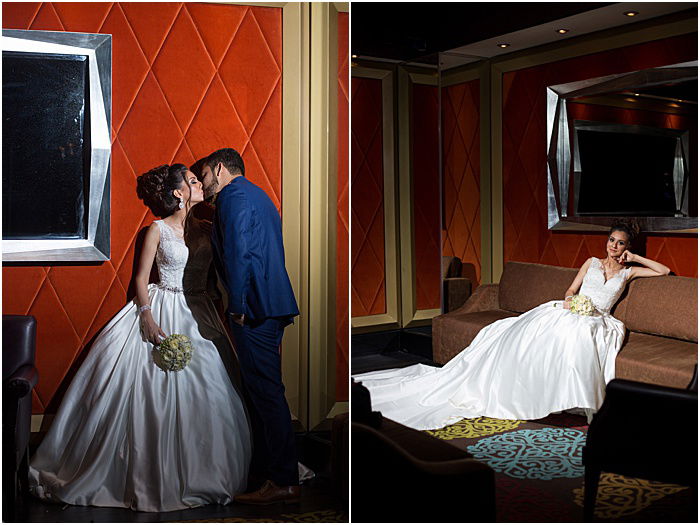
Use flash indoors to create dramatic effects. Angle the flash a different way to get different creative lighting.
This will create
shadows and
add depth in your portrait. You can make it dramatic by making the shadows more prominent.
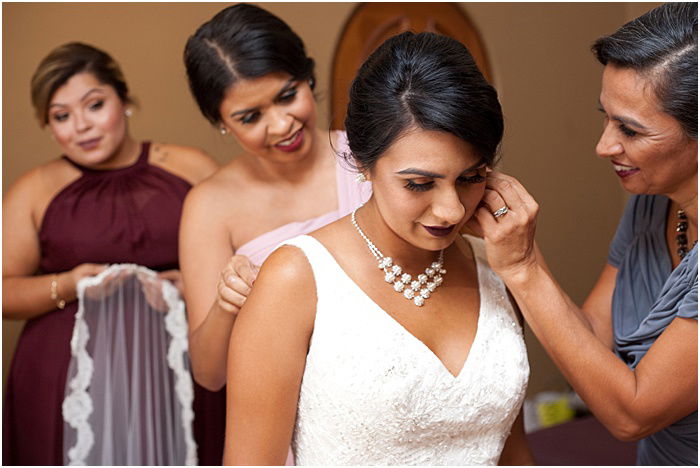
Use flash to photograph the getting ready photos in a dark room. I bounced the flash off the ceiling.
Placing the flash behind the couple can give you interesting sunbursts and creative lighting during the day.
During the night or when there is less available light, use the flash behind the couple. This can give you lots of bright light behind the couple.
It will flood forward and create
ethereal looking lighting behind the couple.
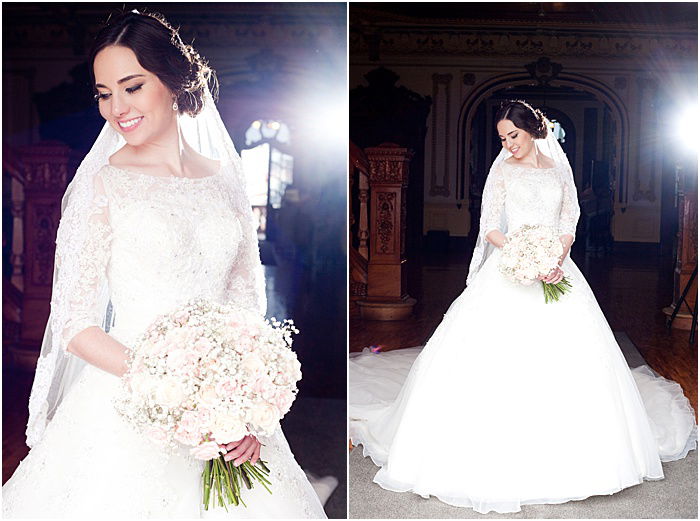
Place the flash behind your subject to create a different effect. This bride was lit with a flash behind her and a big window in front of her with a lot of natural bright light.
If you have more than one flash available to you, use them in opposite corners of the frame. This will create more than one sunburst in the same image.
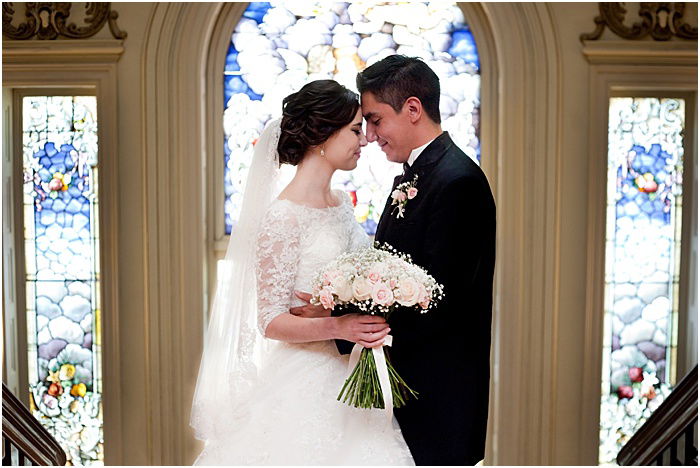
This couple was lit with the flash behind them.
You can use a flash to create
drama indoors as well.
In dark buildings or venues, flash can come in handy. It’ll light the space a specific way so that you can create unique photos for your clients.
Use Flash for Better Group Photos
It's best to use flash on a flash pole for group photos. You can place the flash in a strategic way so that the light hits all in the group photo.
If you don't have a flash pole, don't worry. You can still light your group with the flash on the camera.

One flash pointed at the ceiling to bounce light onto the subjects.
Using the flash at an angle with the bounce card can help to disperse the light across the whole frame. This is essential for group photos with 5 or more people.
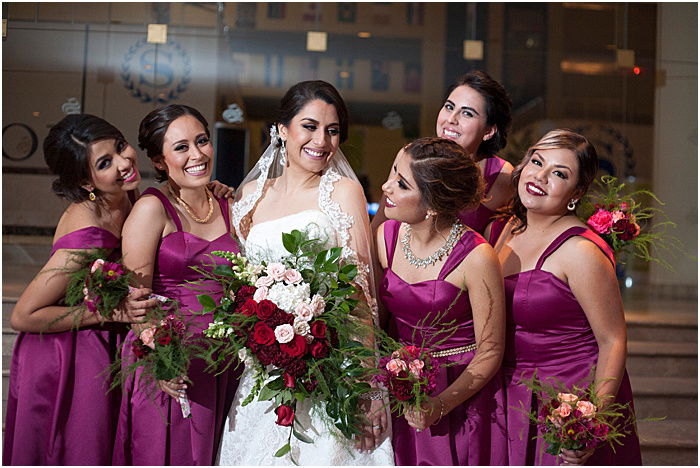
Depending on the wedding schedule, you might have to light portraits with a flash. Here I used two flashes, one at a 45 degree angle camera left and another on my camera.
You can also use two flashes one on your flash and one off camera. This will create even lighting within the group photo.
Using this method, it can also help to use one flash to light the group and the other to light the scene in the event that
ambient lighting is scarce.
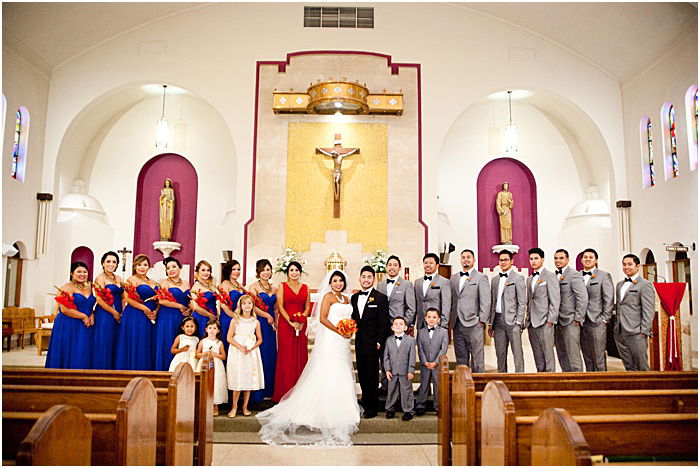
One flash angled at 45 degrees toward subjects in a church.
Should You Use a Flash During the Ceremony?
These are the two most important portions of a wedding day. It's important to keep in mind what you'll need for each.
Church / Indoor Ceremony

In churches, you may be limited to how much flash you can use. Ask before the ceremony begins as to what the guidelines are for flash photography. At this wedding, I was able to use flash throughout the ceremony.
If you find yourself indoors for the ceremony, make sure to speak to the person in charge of the venue. That way you’ll be clear on the guidelines for flash photography.
Some churches allow flash for the processional and recessional but not for the ceremony portion. Some will allow you to use flash at your discretion as long as it's not distracting.
Others may limit your flash photography to the exterior of the building. While others, although rare, may not want flash at all.

Use flash for moments like this after the ceremony to fill in light.
If you're allowed to use flash in the building, try and figure out if you will be lighting the place with the flash on camera or
off camera.
If it's on camera, is there a ceiling you'll bounce light off of to create even lighting? Will you be using a diffuser?
Check your
shutter speeds as well. While flash stops action, it can also create a light dragging effect if you're using a
slow shutter speed.

Using flash indoor can help stop movement but be aware of your shutter speed to avoid blurry photos.
It can be a little tricky as each ceremony is different. Take a few test shots while you're waiting for the processional to begin. That way you can have the right lighting before people begin walking toward the altar.
Outdoor Ceremony
This can be even more complicated. You might be competing with the sun, a sunset, or just harsh afternoon sunlight.
If you are able to arrive at the ceremony location before it beings, think about what the best lighting situation may be.
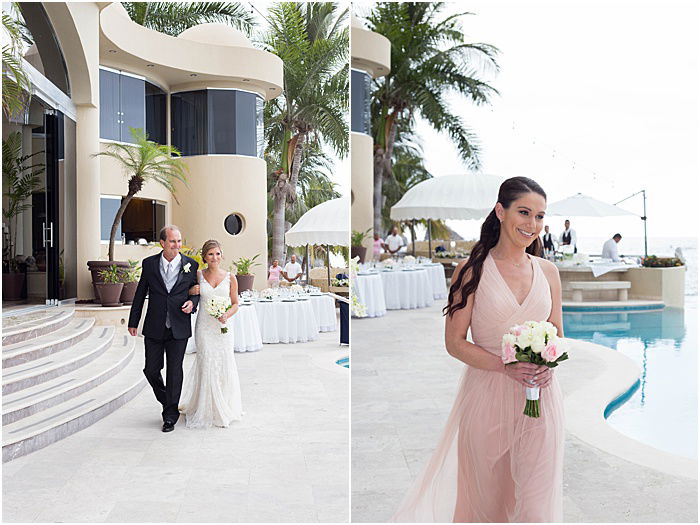
Used flash to fill in light while the bride and bridesmaids walked down the aisle.
That might mean you keep the flash on your camera. That way, you're able to control the angle of lighting at all times.
Or, if available, you can place the flash on a flash pole. Your light will stay consistent throughout the location.
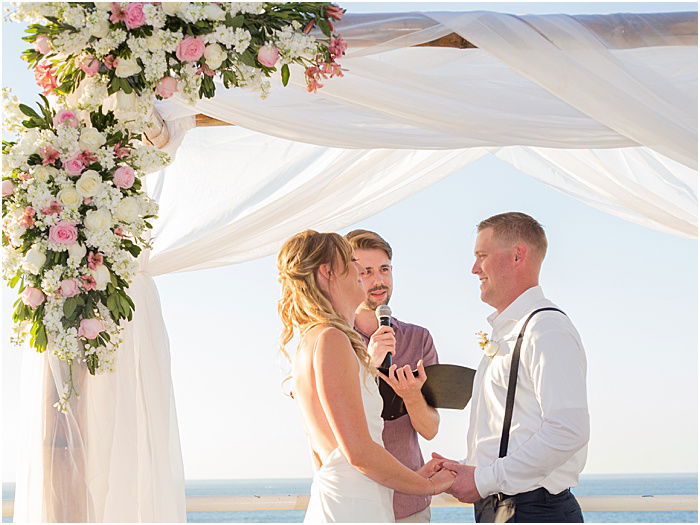
I used flash here as a fill light to help light the couple under the awning.
If you have more than one flash, set them up off to the side and behind the guests so that the light is hitting the altar.
This way, you can move around the altar and still get great lighting. For this, you'll need slaves or remote triggers/transmitters for your flashes and camera.
Flash During Receptions
Receptions are fun and a lot more relaxed than the ceremony. The same rules apply to the reception as the ceremony setups.

Use a flash to light the couple and use the DJ lights to create a nice contrast.
You'll most likely be taking more portraits of the couple with their guests during this time. For that, I suggest you choose a location in the venue where a nice background is. Photograph all
portraits there when asked.
This way, the photos are consistent. You can test your flash lighting beforehand so you know what settings create the best results for the photos.
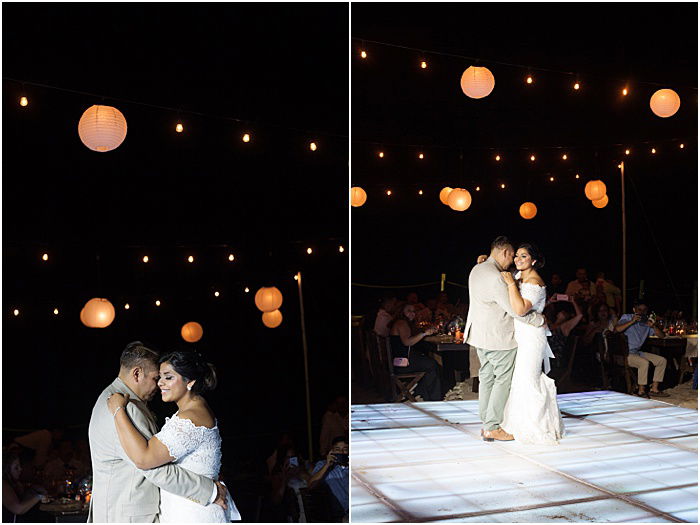
You can also place your flash beside the DJ booth and light the entire dancefloor from that one flash.
Use two flashes to add more depth and dimension to the photos on the dance floor. Keep one on camera and one in the corner or next to the DJ booth.
If you're using one flash on camera only, use the DJ lights behind the couple or guests. It’ll help you to get an interesting mix of
color temperatures in your photos.
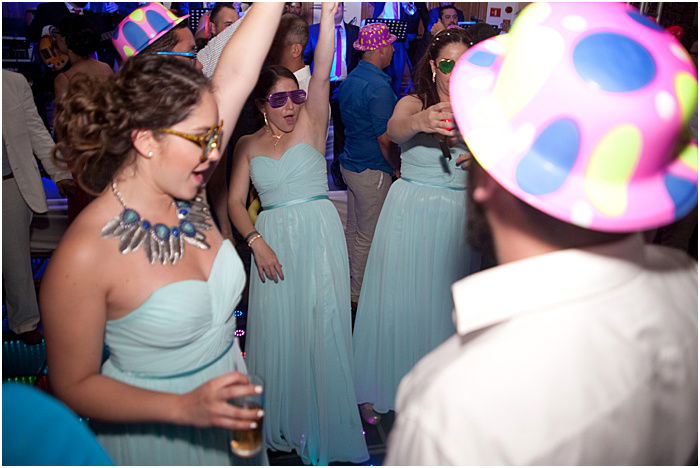
Dragging the shutter means using a slow shutter speed with flash. This can also create interesting photos of the guests
dancing. It can give the illusion of movement within the photo.
Use the Flash to Light Details
During the wedding day, there are many details that you need to photograph. Sometimes ambient light isn't enough to make the detail look its best.
For example, using flash to light rings can help the stone shine a little more than if it were left to just ambient light.
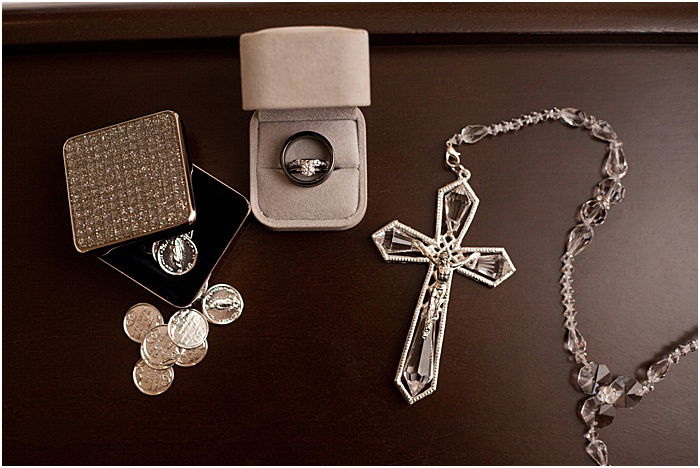
Use a flash to bounce light and create nice highlights on shiny objects.
The getting ready details like the dress and shoes most likely will be
photographed indoors. You may need extra fill light to bring out the details.
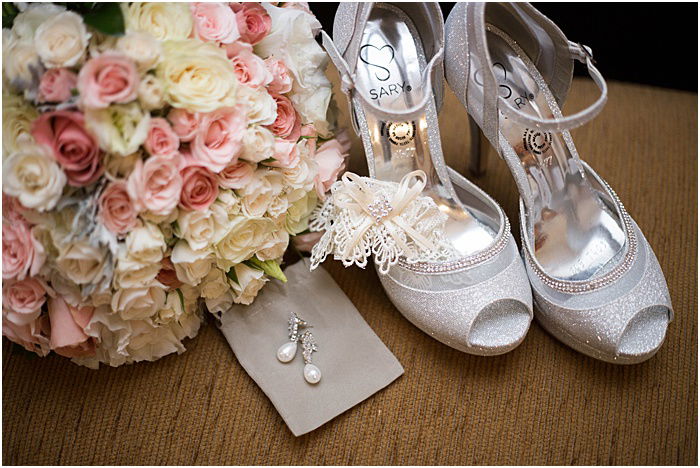
During the reception, use your flash angled at 45 degrees. You’ll get great photos of the
cake, centerpieces, and other details.

For the photo of the dress, the flash was used to balance the exposure from indoor to outdoor. On the right, flash was used to light the flowers and ring.
You can use flash at an angle or perpendicular to your object. That way you can create nice depth within the photo and highlight details that were selected by the couple.

Once you feel you have a great photo of the detail, try angling the light a different way. See if you can get something a little more creative and experimental.
This can also help you to practice different types of lighting with objects. You can later apply them to photos of people.
Conclusion

Flash can seem cumbersome at a wedding. But it can be useful to fill in light during the midday sun, add light to an otherwise dark venue, and create interesting and fun images during the reception.
Do you have any interesting or useful ways to use flash at a wedding?
Check out our Profoto A1 or Profoto B10 reviews if you’re considering buying flash equipment!























